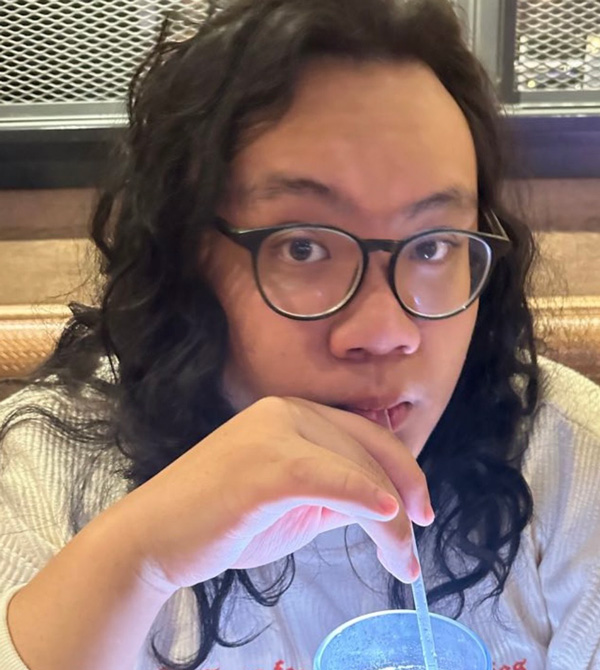

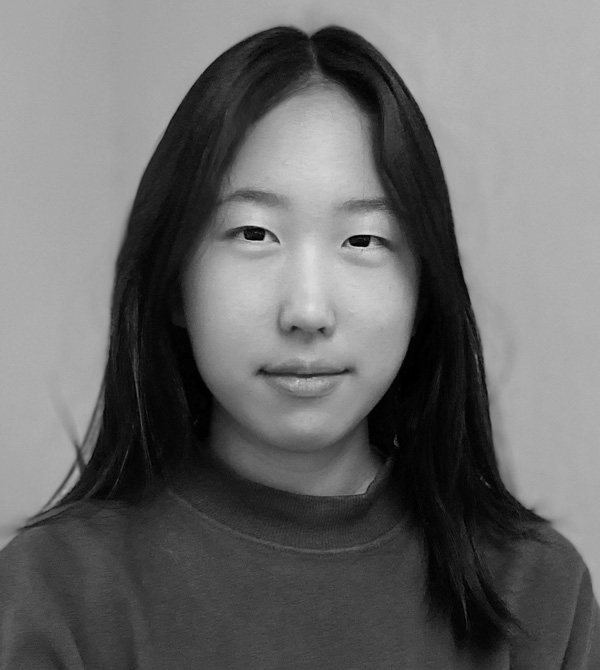
AP 2-D
Lynbrook High School|San Jose, California
Hannah Liaw
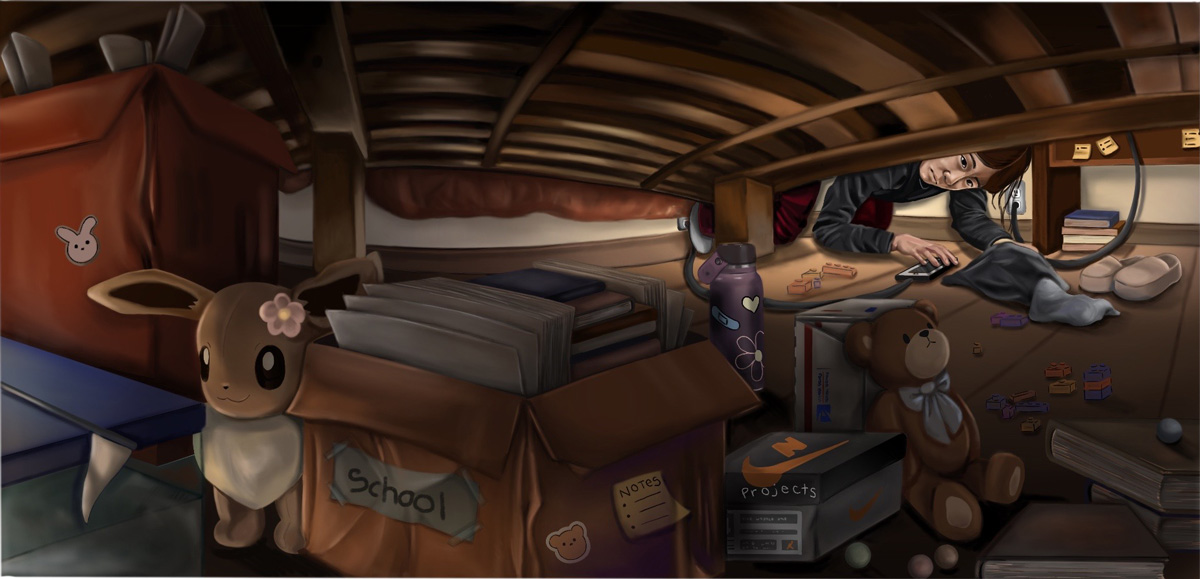
Dimensions: 8” x 16” |Materials: Digital Painting Procreate|Processes: Experimented with fisheye perspective and dramatic camera angles to increase depth/ space.|Curatorial Note:
A magical story connecting the past to the present. Absolutely powerful and well-constructed digital image. We were lucky to see this work.
Student statement
Student statement
Childhood dreams often involve growing up as a gateway to newfound freedom and wisdom, but in truth, the journey seemed to relinquish freedom while bringing in a torrent of new challenges that replaced the once-happy memories.
"Looking Back" is a digital piece I created about forgotten memories, growing up, and the feelings that come with it. It's like taking a trip down memory lane, where you remember the toys and books you loved as a kid. Remember those random homework papers where you can form a picture after answering the questions? Remember the joy of opening a Happy Meal without knowing what you’ll get? The items scattered under the bed are there, just like in that old photo album, but they're not as bright and shiny as they used to be. This piece also relates to my sustained investigation, showing a sense of nostalgia and reminiscence. When you look back at these once-treasured possessions, you are reminded of a time when life was simpler, easier, more free, and not tied down by expectations and the watchful eyes of onlookers. The act of revisiting these childhood treasures takes me back to a time when I saw the world through rainbow lenses with unrivaled curiosity. It reminds me of the blissful days when the most pressing concern was which game to play, who gets to pick the movie, or which toy was best to take on a road trip. Yet, as I grow older, the echoes of school assignments, social expectations, and the growing concern about the future and college become inescapable. A reminder that I’m not a little kid anymore.
The colors throughout are a mix of soft yet dull shades. Some are calm and gentle, like childhood memories, while the harsher lines and clutter in the composition represent the rocky and uncertain feelings. Despite being dull, I wanted the colors to retain warmth for memories to radiate from the items. I also played with the lighting and shadows in this illustration to represent the uncertainties and fears. Throughout my other pieces, lighting was also something I found compelling in conveying my point, and I would experiment with it often. For this piece particularly, perspective was also something I wanted to change. I chose to do a semi-fish eye view to give it a more panoramic look as well as include a distorted feel. With the distortion, I could emphasize the clutter and chaos and fit more into the piece without crowding it.
When choosing an inquiry to base my portfolio on, I only finalized what it would be once I was well into creating the pieces. I wanted childhood to be a common theme, but I wasn’t sure what it was about childhood I should focus on. As I continued building my portfolio, I noticed how a lot of the colors were more muted. I also completed this piece before relating to fears and wanted to find a way to incorporate it into my drawing. For revising and experimenting throughout, composition was what I worked on the most. Finding ways to include all the elements I wanted without giving away the message was something I struggled with but got better at after each piece.
For future AP Art and Design students, don’t worry too much about your overall inquiry. Creating numerous pieces fitting into one slot seems daunting, but they align as you make, build, and experiment with everything possible. Getting everything completed in time is also challenging, but working with your teacher to create a plan is extremely beneficial. Most importantly, draw something you enjoy or like; draw whatever you want.

TEacher statement
TEacher statement

Matthew Reynolds
In teaching AP Art and Design over the past 16 years, the focus on inquiry-based exploration has been crucial to student success. Developing their guiding questions right from the start, I encourage my students to dig deep into what drives their interests and how to best capitalize on their strengths. We often use mind mapping and other brainstorming activities to establish starting points. As themes take shape, students push beyond their comfort zone using new media, experimenting with formats, and moving towards more unique and varied expressions of their ideas.
The classroom culture must create space for students to be self-directed while knowing that the opportunity for critique and input is always available. The focus on practice and experimentation encourages students to be curious, try out possibilities, and reduce the volume of the internal judgment that all artists face during the creative process. At this phase, I offer variations on student ideas, encouraging each person to pay attention to their creative voice.
In the revising phase, students look back at their production, evaluating areas for improvement through a more critical lens. It is essential to identify the most important aspects of their work and recognize when to change direction. In class, we track growth both visually and through writing. Students regularly take in-progress photos of their sketchbooks and portfolio pieces to have an up-to-date record to guide them to the next steps. As students draft their written evidence, they are encouraged to cite specific aspects of their imagery, artists inspired by, and their process descriptions to give the viewer insight into their thinking. This cycle of practice, experimentation, and revision is ongoing, and as the year progresses, new tools are added to encourage creative problem-finding and problem-solving.
Throughout the AP class, Hannah embraced all these practices while challenging herself to bring her vision and high standards for each piece into being. She came into the AP class with strong technical skills and pushed to find new ways of broadening her technical and conceptual understanding. Demonstrating this growth is essential to success in the AP portfolio. The writing exercises, critiques, self-evaluation, and reflection activities fueled Hannah’s experiments. Her exemplary implementation of creative points of view and relentless focus on creating unique imagery revolved around how nostalgia, dreams, expectations, and fear intertwine and shift with growing up. Hannah’s efforts yielded a perfect score on her AP portfolio. She is one of only 337 students worldwide who achieved this during the 2022-2023 academic year!
I feel incredibly fortunate to have such engaged students in my AP class each year. My students and I are fortunate that our principal, Maria Jackson, knows how important it is to have a comprehensive arts curriculum. Principal Jackson has consistently demonstrated curiosity about the program and excitement for student exhibits. I am grateful that she fully supports us in pursuing the resources to provide up-to-date technology and high-quality tools and materials. This commitment from the administration and our community enables students to enter AP Art and Design with many experiences beyond drawing/painting, including photography, graphic design, and printmaking. AP Art and Design students benefit from access to multiple avenues for exploration, which provide a strong foundation for success in the visual arts.

Boxes contain lost childhood memories pushed away; I'm looking under the bed, reminiscing the past.
Principal statement
Principal statement
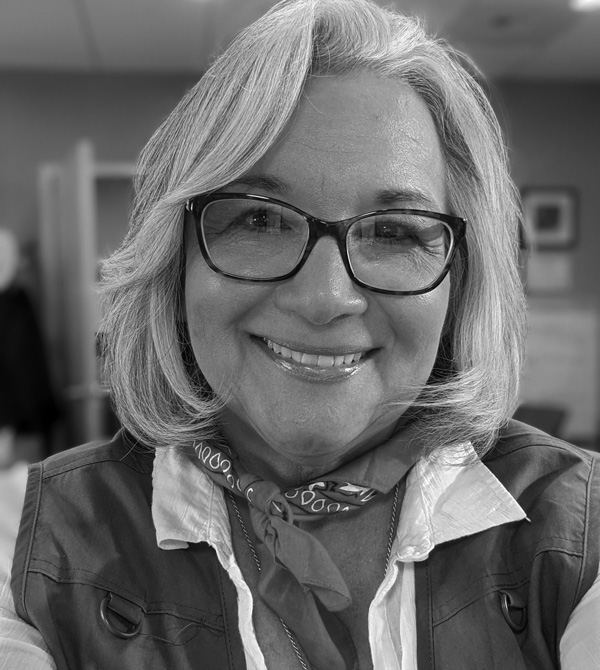
Maria Jackson
Lynbrook High School is recognized as a top STEM school, but the arts are the key to inspiring the curiosity and creative thinking of the next generations. The arts define life and fuel innovation. Lynbrook has a thriving 2-D, 3-D, and digital arts program. Students can explore, stretch, and investigate how art can help them see and interpret their world. Our highly qualified teachers offer students the perfect balance of skill-building and personal expression.
Edgar Degas said, “Art is not what you see, but what you make others see.” Hannah Liaw’s artwork reveals the impact of technology on young people. No longer plugged into innocence and the joy of learning, young people are tethered to their devices powered by outside influences. Hannah Liaw is an eleventh-grade student at Lynbrook. Her artistic excellence and vision are well-honed for her age. We are honored that Hannah’s genius was recognized and celebrate her accomplishment.
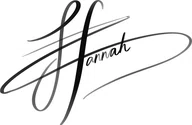
Aaron Artimes





